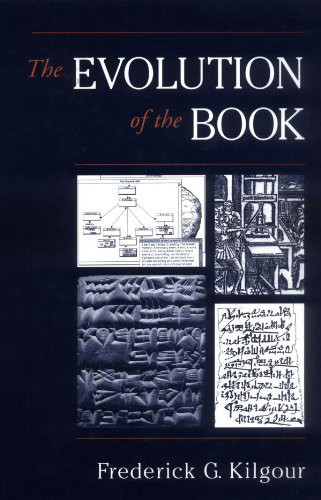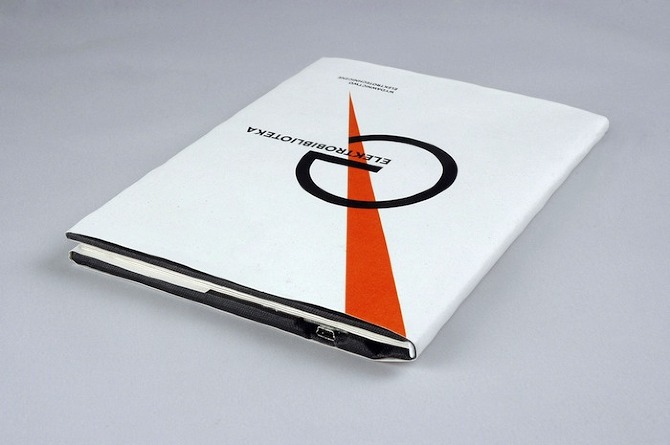Frederick G. Kilgour: The Evolution of the Book (1998)
Filed under book | Tags: · book, codex, e-book, history of technology, hypertext, library, networks, paper, print, publishing, technology, writing

A concise book by the professor in library and information science who, in the late 1960s, helped to establish the Online Computer Library Center (OCLC), a worldwide consortium of library databases.
Writing from the perspective of history of technology, Kilgour investigates the book’s three discrete forms–the clay tablet, papyrus roll, and codex–before turning to the electronic book.
Publisher Oxford University Press, New York, 1998
ISBN 0195118596, 9780195118599
180 pages
Review (Robert J. Brugger, Technology and Culture, 2001)
Review (Bruce Whiteman, Huntington Library Quarterly, 1998)
PDF (12 MB)
Comment (0)Bonnie Mak: How the Page Matters (2011)
Filed under book | Tags: · book, codex, e-book, image, library, paratext, print, reading, text, typography

“From handwritten texts to online books, the page has been a standard interface for transmitting knowledge for over two millennia. It is also a dynamic device, readily transformed to suit the needs of contemporary readers. In How the Page Matters, Bonnie Mak explores how changing technology has affected the reception of visual and written information.
Mak examines the fifteenth-century Latin text Controversia de nobilitate in three forms: as a manuscript, a printed work, and a digital edition. Transcending boundaries of time and language, How the Page Matters connects technology with tradition using innovative new media theories. While historicizing contemporary digital culture and asking how on-screen combinations of image and text affect the way conveyed information is understood, Mak’s elegant analysis proves both the timeliness of studying interface design and the persistence of the page as a communication mechanism.”
Publisher University of Toronto Press, 2011
Studies in Book and Print Culture series
ISBN 080209760X, 9780802097606
ix+129 pages
Reviews: Martha W. Driver (Speculum, 2013), Martin G. Eisner (Renaissance Quarterly, 2013), Brett A. Hudson (Papers of the Bibliographical Society of America, 2014), Julie Holcomb (Information & Culture, 2012).
Interview with author: Gretchen E. Henderson (Ploughshares Literary Magazine, 2013).
PDF (scan; updated on 2023-6-5)
PDF (updated on 2020-10-7)
Waldek Węgrzyn: Elektrobiblioteka / Electrolibrary (2012)
Filed under augmented book, thesis | Tags: · book, design, e-book, interactive design, interface

A hybrid book project inspired by El Lissitzky’s manifesto published in 1923.
Author: “I was interested in the phenomenon of a book perceived as a kind of interface, which has influenced the way we deal with information. I also wanted to shift the experience typical for print design to the field of digital media. One of the major inspirations was the manifesto ‘The topography of typography’ published in 1923 by a graphic designer El Lissitzky, who has expected a book to be replaced with something he called “electrolibrary”. It seems that his predictions came true.
The final result of the project is the paper book that can be connected to the computer via USB cable. It is able to physically detect which page is currently open and send that information to the Electrolibrary website. By turning pages or touching given illustrations you can navigate through the website and get additional information such as hyperlinks, quotations, movies etc. Of course you can also unplug the cable and read it like a normal book.
The book was intended to be a single object, just for presentation. The great interest in my project that I encounter surprised me. I did not expect that at all, so maybe this project can be developed further.” (source)
Diploma thesis
Multimedia dept, Academy of Fine Arts, Katowice, Poland
Supervisor: Bogdan Król
via Jono van Belle
demonstration video
Lissitzky’s manifesto
View online (HTML) [Polish]
Comment (0)
